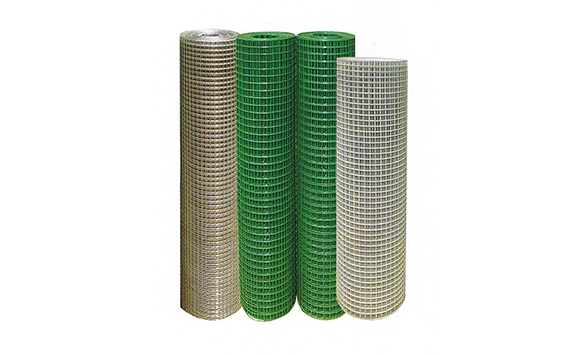
- Mobile Phone
- +8613931874955
- sales@cntcmetal.com
wire compression springs
Understanding Wire Compression Springs Design, Applications, and Benefits
Wire compression springs are crucial components used in various mechanical applications. They are primarily designed to absorb and store energy, providing resistance against compressive forces. Made from coiled metal wire, these springs exhibit remarkable elasticity and strength, making them ideal for a diverse range of applications. In this article, we will explore the design aspects, applications, and benefits of wire compression springs, underscoring their importance in modern engineering.
Design of Wire Compression Springs
The design of wire compression springs is a precise and intricate process that requires careful consideration of several factors. The primary elements include the wire diameter, coil diameter, number of active coils, and the material used.
1. Wire Diameter The thickness of the wire directly affects the spring's overall strength and load-bearing capacity. Thicker wire can handle greater forces but may reduce the spring's flexibility.
2. Coil Diameter The coil diameter influences how much the spring can compress. A smaller coil diameter provides a stiffer spring, while a larger diameter allows for more compression, making the spring more adaptable to specific needs.
3. Number of Active Coils The number of active coils determines the spring's deflection and load capacity. More active coils typically mean increased deflection but can weaken the spring's overall resistance to compression.
4. Material Selection Common materials for wire compression springs include high-carbon steel, stainless steel, and alloy steels. Each material offers unique properties, such as corrosion resistance or higher tensile strength, catering to different environmental and operational conditions.
The manufacturing process typically involves techniques such as coiling, heat treating, and finishing, which enhance the spring's mechanical properties and performance characteristics. Quality control is essential, ensuring that each spring meets the specified tolerances and performance criteria.
Applications of Wire Compression Springs
Wire compression springs find applications in multiple industries due to their versatility. Some notable applications include
1. Automotive Industry They are used in various automotive systems, including suspension systems, brakes, and transmission assemblies. They provide shock absorption and contribute to the overall stability of vehicles.
2. Aerospace In the aerospace sector, compression springs are integral to safety mechanisms, landing gear systems, and throttle controls. Their reliability in extreme conditions makes them indispensable.
wire compression springs

3. Consumer Electronics Devices like keyboards, printers, and remote controls often rely on compression springs for tactile feedback and functionality. These springs help return buttons to their original positions after pressing.
4. Industrial Machinery Compression springs are vital components in conveyor systems, packaging machinery, and automotive assembly lines. They assist in maintaining pressure and ensuring smooth operation.
5. Medical Devices Medical equipment often employs compression springs for precision and reliability. From surgical tools to diagnostic machines, these springs play a critical role in functionality and safety.
Benefits of Wire Compression Springs
The advantages of wire compression springs extend beyond their functional capabilities
1. Energy Storage They are excellent at storing and releasing energy, making them essential in applications that require repetitive motion or shock absorption.
2. Customizability Wire compression springs can be manufactured to meet specific dimensions and performance criteria, allowing for custom solutions in design engineering.
3. Cost-Efficiency When designed and produced correctly, wire compression springs offer a cost-effective solution for various mechanical requirements, reducing the need for more complex mechanisms.
4. Durability and Longevity High-quality materials and precise manufacturing processes result in springs that can withstand extensive use over time, minimizing the need for frequent replacements.
5. Simplicity of Design Their straightforward mechanism makes wire compression springs easy to integrate into existing systems, simplifying assembly processes for manufacturers.
Conclusion
Wire compression springs are fundamental to various mechanical systems, contributing to the functionality and reliability of countless applications. Their design intricacies, diverse applications, and numerous benefits make them indispensable in modern engineering. Whether in automotive, aerospace, or consumer electronics, these springs continue to play a vital role in shaping the technological advancements of our time. As industries evolve, the demand for high-performance wire compression springs will remain strong, underscoring their importance in innovation and design.
share:
-
Wall Ties for Concrete: Invisible Guardians of Building Structural StabilityNewsAug.08,2025
-
Timber Frame Wall Ties: Stable Bonds for Load TransmissionNewsAug.08,2025
-
Stainless Steel Woven Wire Mesh: A versatile material from boundary protection to functional supportNewsAug.08,2025
-
Powder Coat Coil Springs: Creating peace of mind and reliability with sturdy protectionNewsAug.08,2025
-
Floor Standing Sign Holder: A Powerful Assistant for Flexible DisplayNewsAug.08,2025
-
Binding Iron Wire: An Invisible Bond for Building StabilityNewsAug.08,2025
-
Yard Sign Stakes: Reliable Guardians of Outdoor SignsNewsAug.04,2025



















